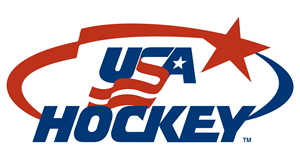How to fill out a Traditional Scoresheet
This page will show you how to properly fill out a scoresheet. Each red circle, corresponds to the list number below.
HOCKEY SCORE SHEET INSTRUCTIONS
1. Fill in game date, time, and location.
2. Fill in home team name and circle HOME. Attach roster sticker with players and coaches listed (include coach CEP #s and head coach’s phone number). Attach stickers to each copy of the scoresheet. Everything for the home team will be on this side of the score sheet.
3. Fill in visitor team name and circle VISITOR. Attach roster sticker or have visiting team manager fill out roster information. Attach stickers to each copy of the score sheet. Everything for the visiting team will be on this side of the score sheet.
4. Have penalty box attendants count shots on the goalie. On the HOME side, write down the number of shots ON the home goalie. A Shot ON Goal (SOG) is any shot that would have gone in the goal if a goalie was not there. (Shots where the goalie makes a save outside of the net/post that would not have gone in, and shots that hit the post and bounce away are not considered a SOG) Mark shots for each period. The number of saves should be equal to the number of shots minus the number of goals for the opposing team. Do this for each goalie.
5. SCORING - All scoring will be reported by referees. For example, a ref will come to the score box and say “goal, white (color refers to team’s jersey color), #3, assisted by #12.” Mark the period, the time on the clock, the number of the player who scored, the number(s) of the player(s) who assisted, and the type of goal. The types of goals are at the bottom of the scoresheet (EV-even strength, PP-power play, SH-shorthanded, EN-empty net, EA-extra attacker, PS-penalty shot). At the end of the game, cross out unfilled lines so nothing can be added to the score sheet.
6. PENALTIES - All penalties will be reported by referees. For example, a ref will come to the score box and say “two minute penalty, #60 white, for slashing.” Mark down the period, player’s jersey number, the offense, the length of the penalty, the time they came off the ice, and the time they went back on the ice (that could be less than the length of the penalty if a goal is scored). At the end of the game, cross out unfilled lines so nothing can be added to the score sheet.
7. After the game, the referees will sign off on the score sheet and return it to you. You should enter your name as the official scorer.
8. After each period, put the score in this section, totaling it at the end.
Additional tips - write clearly and press hard enough to go through to all four copies. When marking times (goals, penalties) - you can either use the time remaining on the clock, or the time lapsed by calculating that from the time remaining, but be consistent throughout the score sheet. When player numbers are reported for goals, if the coaches see something different than the refs (ie, refs say #60 assisted, but the coach says it was #61), communicate that to the refs. Refs will typically go with what the coaches saw for that as they recognize the players better, but the ref is the official, so if there is a discrepancy, only put on the score sheet what the ref reports.
Oops!
You have unsaved elements
Please save or cancel the pending changes to the elements within your page and then try saving again.



